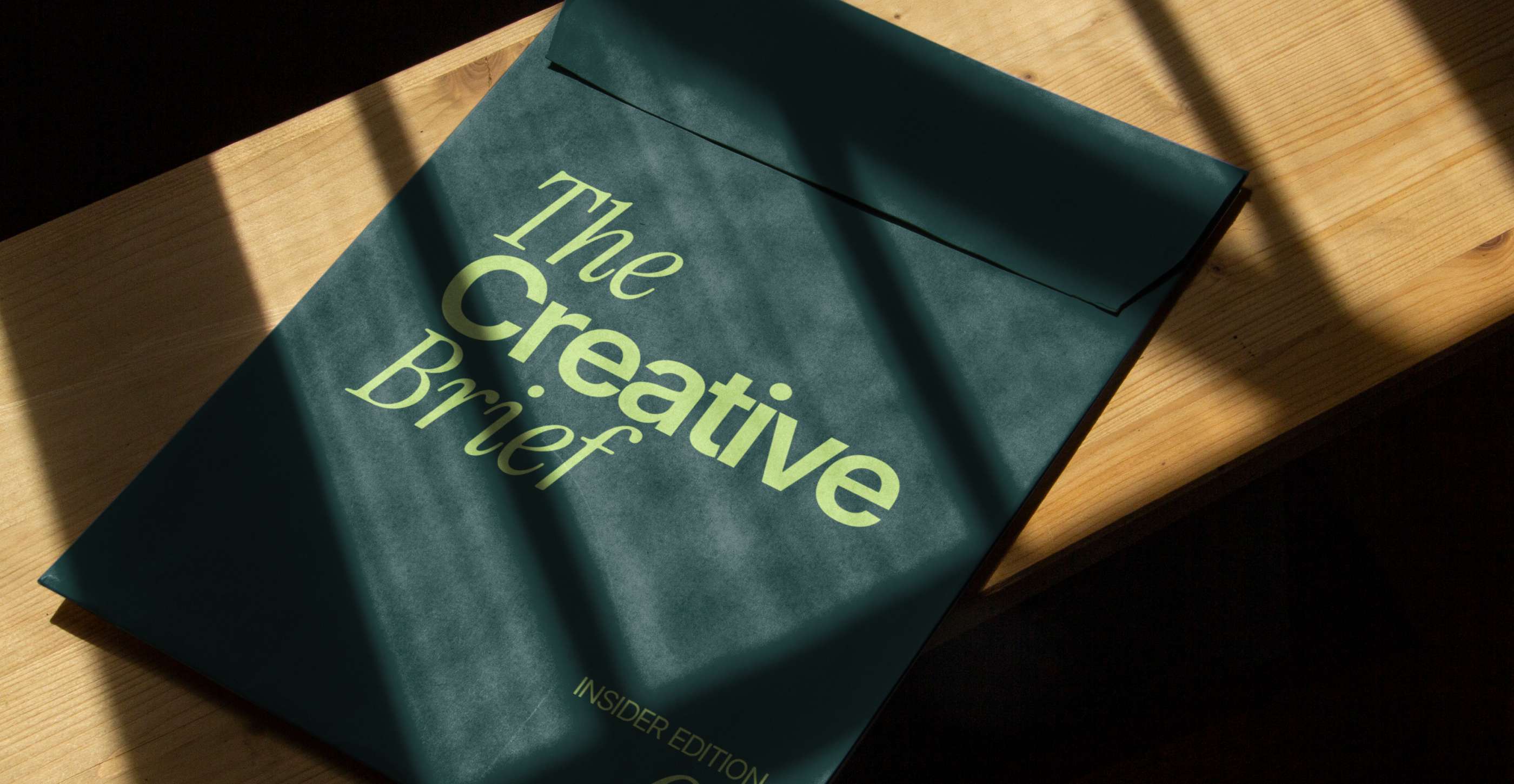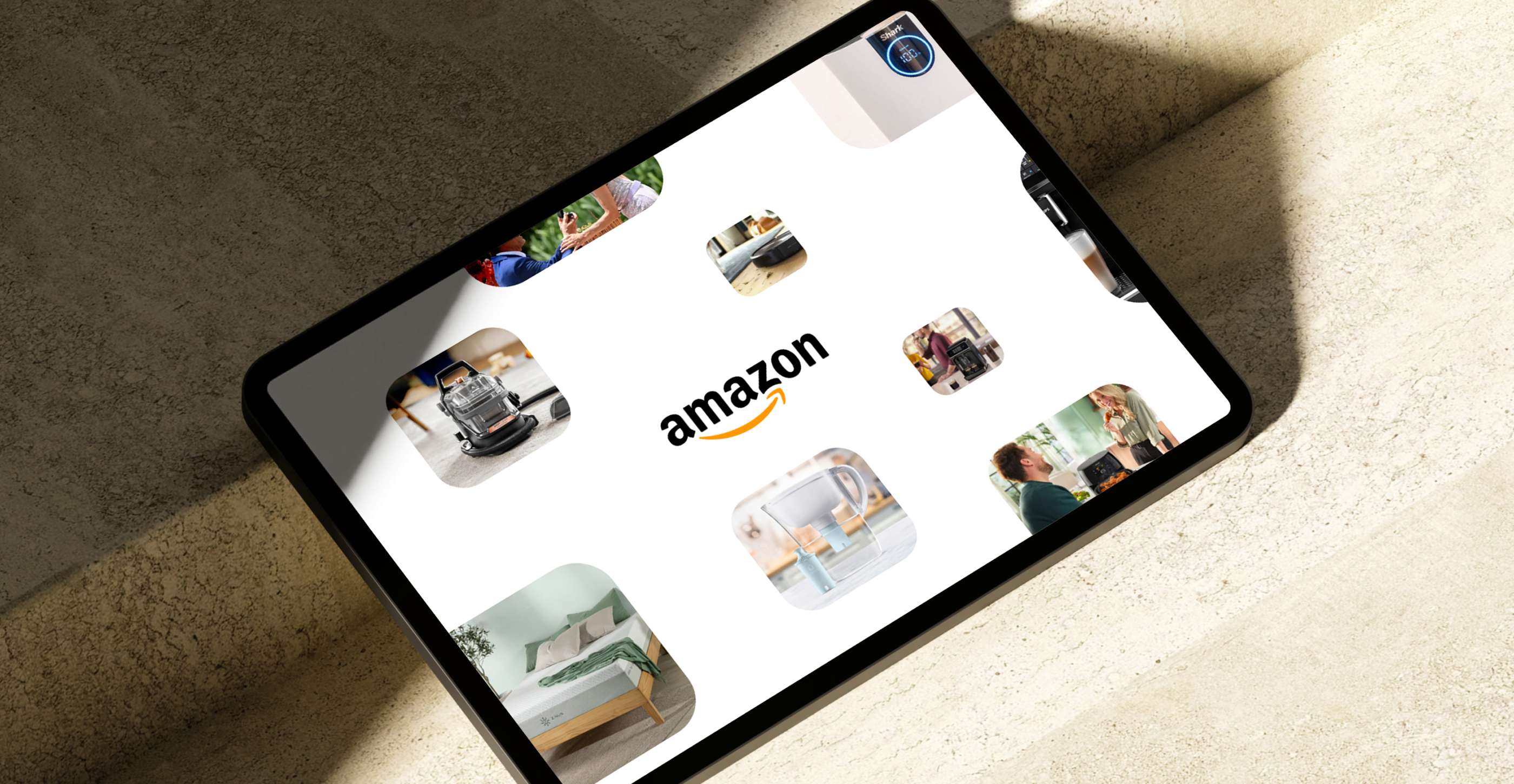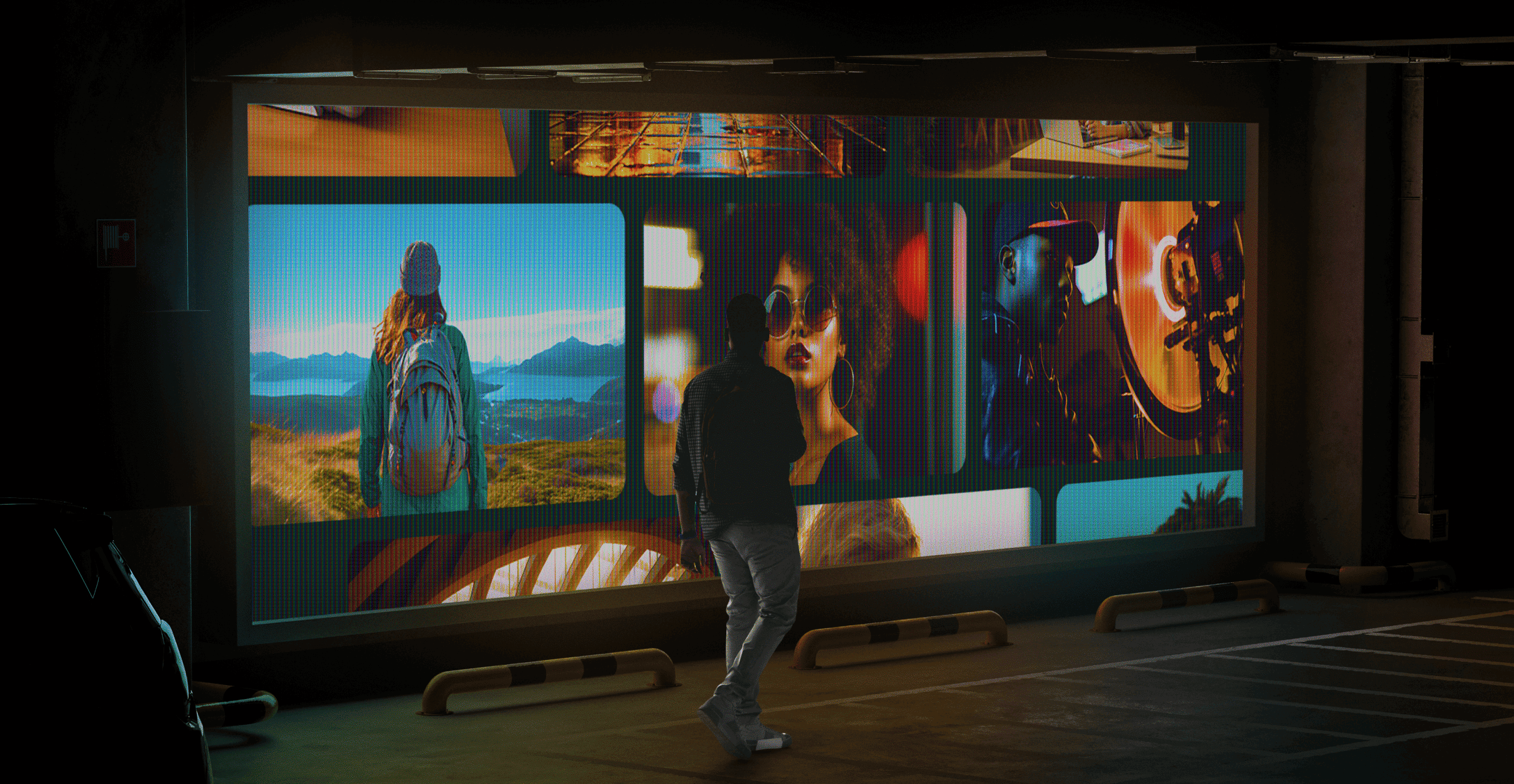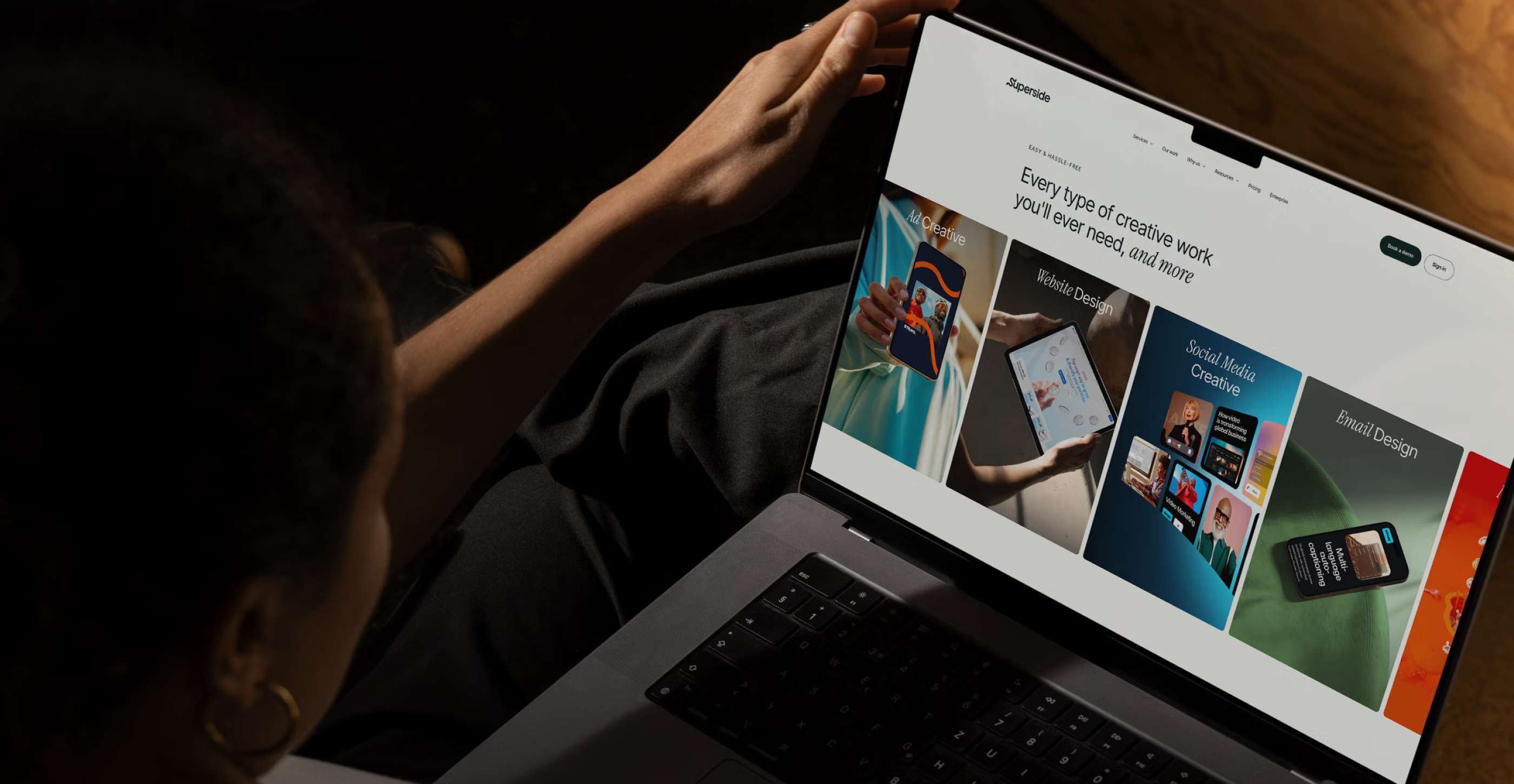Design Maturity: How to Go Into Growth Mode


Design teams that operate as a strategic asset rather than a “drive-thru”-style service transform business outcomes. Only 5% of businesses are using creative in this way, leaving great opportunity for brands with high design maturity (integration of the creative team into every facet of the company) to solve business challenges and drive growth.
Most creative and marketing teams are always teetering on the edge of greatness. The designers are talented, the marketers are clever—so why does it so rarely show up on the end-of-month graphs?
Well, as any veteran creative or marketing leader knows, talent and cleverness are wasted if there’s no discipline. Maturity on a design team is what converts that ethereal genius into consistent performance. When you struggle to scale, there’s a good chance design maturity is the missing ingredient.
To turn that glimmer into gold, we sat down with DesignOps leaders from Handshake, Wise and 8x8 at our recent Gather & Grow, Fast-Tracking Design Maturity With DesignOps. There, hundreds of creative professionals learned firsthand how to quickly instill design maturity on their teams, and start putting design in the strategy seat. Read on to reap the learnings from this session or watch the recording here!
What is Design Maturity?
Forgiving the imagery, design maturity is not about how many gray hairs you share between your team. Design maturity is a measurement of how deeply your creative team is integrated into your business as a whole.
In our Gather & Grow, Patrizia Bertini, Design Operations Strategist at 8x8 established what true design maturity means.
It’s not about project management, it’s a transformational discipline. We’re not talking about our small design courtyard. We’re extending what we can achieve as a business.

At the higher levels of design maturity, design is no longer about how many ads or videos the creative team is pumping out. It’s about how the company uses design to solve issues that traditionally aren’t thought of as design problems; upholding and emphasizing human-centricity at their core.
On a tactical level: This can mean developing templated assets for an ABM initiative, or a tailored sales enablement asset that helps the team win a high-value account. It could be creating internal assets that break down complex ideas visually (instructions, campaign plans, important presentations), or shareholder-facing assets that do the same. Use your imagination—there are very few operational areas that wouldn’t be enhanced by thinking with design on the table.
At a strategic level: This could mean using design to frame executive business challenges. How is the product or service differentiating itself from competitors in the same space? What is it about the product or service that appeals to users, and how can that information be used to inform further developments to those products or services?
Ultimately, design maturity is about reframing business problems in human-centric ways, and leaning on the creative team for solutions. It’s everything a high-performance brand embodies, and what every other team should be striving for.
How do you assess design maturity?
Although nearly 80% of companies say they include design on most projects, just 5% of businesses are using design to its greatest potential. For many creative and DesignOps leaders, the journey to creative maturity is a question of perception: Does the business see your design team as a strategic asset, or a service?
Here’s how to know where your team sits:
- If the business largely treats your design team as a service—requests come in, creative fulfills them with little to no input on the overall vision—you’re in the first stages of design maturity.
- If the business treats design like a strategic partner—using creative to help shape the vision of the company; asking how design can solve challenges across the business—you’ve got a high degree of design maturity.
Johnny Michaelsen, Director of DesignOps & ResearchOps at Wise, said the key to transforming from the former into the latter is bringing other teams into the design fold.
For design to mature at a company, the company has to mature. In this framework, we need much more collaborative efforts to get us there.

Why Design Maturity Matters
Design maturity may be the single biggest determinant of a creative team’s success. Though it pains design leaders to hear it, even a semi-competent design team will outperform your league of creative geniuses if the former is more integrated into the business.
Research shows companies that lead with design grow revenues at twice as fast as their competitors. They also increase their shareholders’ returns at nearly twice the rate of those who place design lower on their priority list.
It shouldn’t be a surprise that some of the most prolific brands in the world—the Amazons and Shopifys embedded into our commercial culture—put creative in the strategist’s seat.
Who’s in charge of design maturity?
Note that while your placement on the scale above depends on leaders from other departments accepting design as a universal tool, it’s the job of design leadership and DesignOps to create business integration.
In fact, you’d still be a perfectly successful creative leader if design integration was all you ever thought about. Asking yourself what you’re doing to bring creative to the forefront of the business each day is a good use of time and authority as a creative or DesignOps lead.
The Stages of Design Maturity
While there’s no industry-standard playbook for achieving maturity across any organization (wouldn’t that be nice), our panel of experts helped us build a broad framework for how design maturity appears in companies of any size. Here’s how our DesignOps veterans said design operates across most businesses.
Stage 1: Design is a producer.
In its initial stages, design is just what happens on a computer. It’s purely a service, and isn’t understood to be of greater value by business leaders. Design exists in a silo, and is tagged only when deemed utterly necessary to business functions (creative for ads, a launch etc.).
Here, organizations initiate efforts to establish efficiency and a cohesive narrative through visual identity guidelines, but they tend to overlook processes, collaborative efforts, and advanced tools.
What design needs to progress…
Bertini at 8x8 said working together across different teams, using workshops and online tools, and establishing an end-user research program will provide these companies with what they need to move forward.
You have to start from the assumption that design is cross functional. No silos.

Stage 2: Design is a connector.
Design teams have enhanced their collaborative procedures, and are beginning to bring other teams into the design fold. Joint working sessions and integrated tools are a must, and enable collaboration with their non-design counterparts.
The integration of user research, user stories, internal/external usability testing, and personas has become more widespread. In general, there’s a heightened discourse surrounding design—from executives emphasizing its significance to employees demonstrating increased curiosity and empathy towards prospects, customers and internal users.
What design needs to progress…
Focus on creating design systems by hiring people who specialize in systematic approaches (ahem, DesignOps). These individuals, including designers, engineers and product managers, will exclusively work on building design systems on a larger scale.
In the webinar, Beth Leggett, Director of Design Operations at Handshake, suggested not waiting for permission to join high-level conversations—just go for it.
When it comes to gaining influence, think about how design can directly support anyone you’re speaking to. Show them how design can make everything better. Plug in anywhere you think you can benefit.

DesignOps is a key component in this stage of integration, as it builds advocacy and ensures creative’s voice is heard and its capabilities used outside design teams.
Stage 3: Design is an architect.
Establishing design as a scalable function is a key feature for these businesses. They've progressed beyond simple participatory design methods, and now embrace shared ownership, clear roles, joint accountability and increased documentation of their more significant design practices.
This allows design to assist in handling more intricate product/service ecosystems, and become part of other teams’ intricate internal operating structures.
What design needs to progress…
Design teams (and the businesses they’re embedding themselves within) should concentrate on improving how they experiment. They should create routines for coming up with ideas, conducting tests and measuring the outcomes. Because newer parties are just getting used to a relationship with creative teams, design projects at this stage can often succumb to scope creep—another reason DesignOps is so critical.
People want bigger outcomes with more impact, so 2024 is not gonna be about playing it safe for DesignOps. If we need to throw out processes to do that, so be it. In uncertain times, go bold.

Stage 4: Design is a scientist.
At this stage, organizations excel in design guided by data. They possess advanced methods for analytics, experimentation, user research recruitment, and the thorough assessment of specific initiatives' success. Additionally, they’re laying the foundation for a design strategy by participating in market research and vision development. In these companies, the design team has the authority to explore important opportunities.
Executives are fully committed, openly acknowledging the significance of design and closely tracking its impact on the business. To uphold these practices, design operations are completely formalized.
What design needs to progress…
To reach the highest level, these businesses need to make design a central part of their plan. Thankfully, all the pieces are already in place: A design team, the necessary infrastructure and operations, and the ability to test and learn in a quantifiable way. They just need to use these tools to tackle new business challenges, bringing design thinking into important business discussions and using design exploration to find the next big opportunity.
Stage 5: Design is a visionary.
These companies demonstrate strength in every aspect of maturity, but their distinctive edge lies in the total integration of design into overall strategy. Design contributes a distinctive perspective to strategy by employing exploratory user research methods, analyzing product market fit through trends and foresight research, and executing cohesive cross-platform strategies.
Bertini said total design maturity is mostly removed from the daily project management that many DesignOps professionals spend so much time on.
If you’re doing design ‘tasks,’ you’re doing PM’s work. DesignOps is strategic by nature. If you want someone to manage licenses, that’s a PM. If you want impact, that’s DesignOps.

Consequently, these companies affirm that design has a broad-reaching impact, influencing various benefits such as enhanced employee productivity, increased market share growth, and the creation of new intellectual property.
Tips for Increasing Design Maturity on Your Team
Our DesignOps experts shared some clear instructions for how to turn up the creative maturity in your organization, and bring design into the fold as a strategic partner. Though most creative professionals will benefit from these tips, DesignOps and creative leadership should pay special attention to the following.
1. Make integrating design into every facet of the business your mission. Accelerating creative maturity depends on every department understanding how design serves their specific goals.
2. Grab your own chair at the leader’s table. Leggett advises involving yourself in (or at least attending) as many leadership meetings as possible; make them see design as a player.
I make a habit to meet with operations teams often, to collaborate and share what we’re doing that could be important to them. Make them part of your monthly practice.

3. Treat DesignOps as a strategic position. If you’re just doing operational tasks, you’re doing a project manager’s work.
4. Maximize the time your designers spend doing actual design work. In many organizations, designers spend less than half their time doing design.---the majority of it is caught up in meetings and administrative tasks that distract from core functions.
5. Find out what your designers think of how the team operates. Bertini said something as simple as an internal survey can get things moving in the right direction. “Ask, ‘what percentage of your time is spent doing reworks?’ Questions like that are perception-based, but then you cross-reference those perceptions with what your PMs and software say about the numbers.” From there, she said you can start making changes.
If the perception improves, you’ll see the other numbers improve.

6. To assess performance, periodically check your overages. Keep an eye on the percentage of projects delivered on time/as planned. For many design teams, Bertini said very few are delivered as planned.
Only 15-20 percent are delivered as planned. 30 are dropped. Another 20 percent are changed.

7. Get your hands dirty. Often enough, design leaders can end up “pontificating” from the sidelines. It’s more helpful to have them advocating for their team’s needs.
Fast-Track Maturity, Fast-Track Scale
There’s an assumption that business leaders—maybe even a few design leaders themselves—make about what real creative leadership looks like. It’s not just about holding ultimate sway over what typeface best encapsulates “financial security;” what color scheme screams “ingenuity in shoe repair.” DesignOps professionals may make similar assumptions, mistaking the daily grind of which-designer-gets-what as their core responsibility.
In truth, the real leaders in design are the ones who bring design up the business’ ladder, enabling both creatives and the business at large to think in design terms. What makes a difference isn’t the odd high-performing ad, or the occasional “blow up” content on your socials. It’s reframing your design role from one of service to one of strategy. At Wise, Michaelsen said it calls for a gradual, but deliberate shift away from the former.
If we’re in that PM mindset, we’re helpful but not necessarily impactful. If you’re always picking the ‘helpful’ thing, it may not move things forward.

If you’d like to learn more about how to empower design as a strategic partner, you know where to find us.
David is a Senior Content Marketer at Superside. A former journalist with bylines too numerous to enumerate, he brings his love of storytelling and semantics to the marketing world. Recognizing the sizable gaps in the creative-as-a-service (CaaS) sector, he jumped at the chance to fill the creative void for ambitious brands. In his off hours, he enjoys loud music, making vegan meals and being made fun of for making vegan meals. He’ll gladly talk to you about any of the above on LinkedIn.
You may also like these

5 tips for standout creative briefs without slowing down production
With the creative services industry under strain, Creative teams today don’t have time to waste on unclear briefs.Yet, they’re everywhere.Unclear creative briefs are more than just annoying, though. They slow production, as team members must spend extra time clarifying important elements such as the creative project goals, the client’s vision, the target audience, key messaging, deliverables, calls-to-action (CTAs) and more.Where multiple stakeholders and large-scale campaigns are involved, chasing these missing details becomes even more time-consuming. Creative projects quickly lose momentum, and creative teams lose their enthusiasm. 😖If this scenario sounds familiar, take heart: Developing effective creative briefs is easier than you might think, especially with the partnerships, technology and creative support solutions now available.
5 digital ad production tips and services for enterprises
Creative teams today are often juggling thousands of ad variations within a single campaign. With constant updates and ongoing customization, the execution process can get pretty messy.And there’s a good chance creative quality and consistency will suffer.To stay competitive, enterprise marketing teams have no choice but to streamline their creative operations to ensure fast execution while maintaining the integrity of the brand across all digital customer touchpoints.Digital campaigns have the power to reach and inspire target customers like no other media, but they can be a significant test for any creative team. This guide provides five proven tips and services to help you scale your digital ad production efficiently.Solving the digital ad bottleneck for large teams
7 top creative support solutions for teams and enterprises
There’s no denying that today’s marketing and creative teams are under more stress than ever. To deliver high-performing, top-quality assets at scale, many teams are getting fewer resources, smaller budgets and tighter deadlines.As an ever-increasing number of brands compete for audience attention, the demand for compelling content is getting higher—and essential for creative teams to meet.It’s no surprise then that in-house marketing and creative teams are turning to advanced creative support solutions to help enhance efficiency, streamline workflows and optimize production processes.From AI-powered design to cloud-based collaboration software and outsourced creative services, these solutions transform how teams work, allowing them to produce more assets faster without compromising quality.Our best advice to teams and enterprises on how to get this right? Make Superside your creative team’s creative team and free up your team to do their best work.








